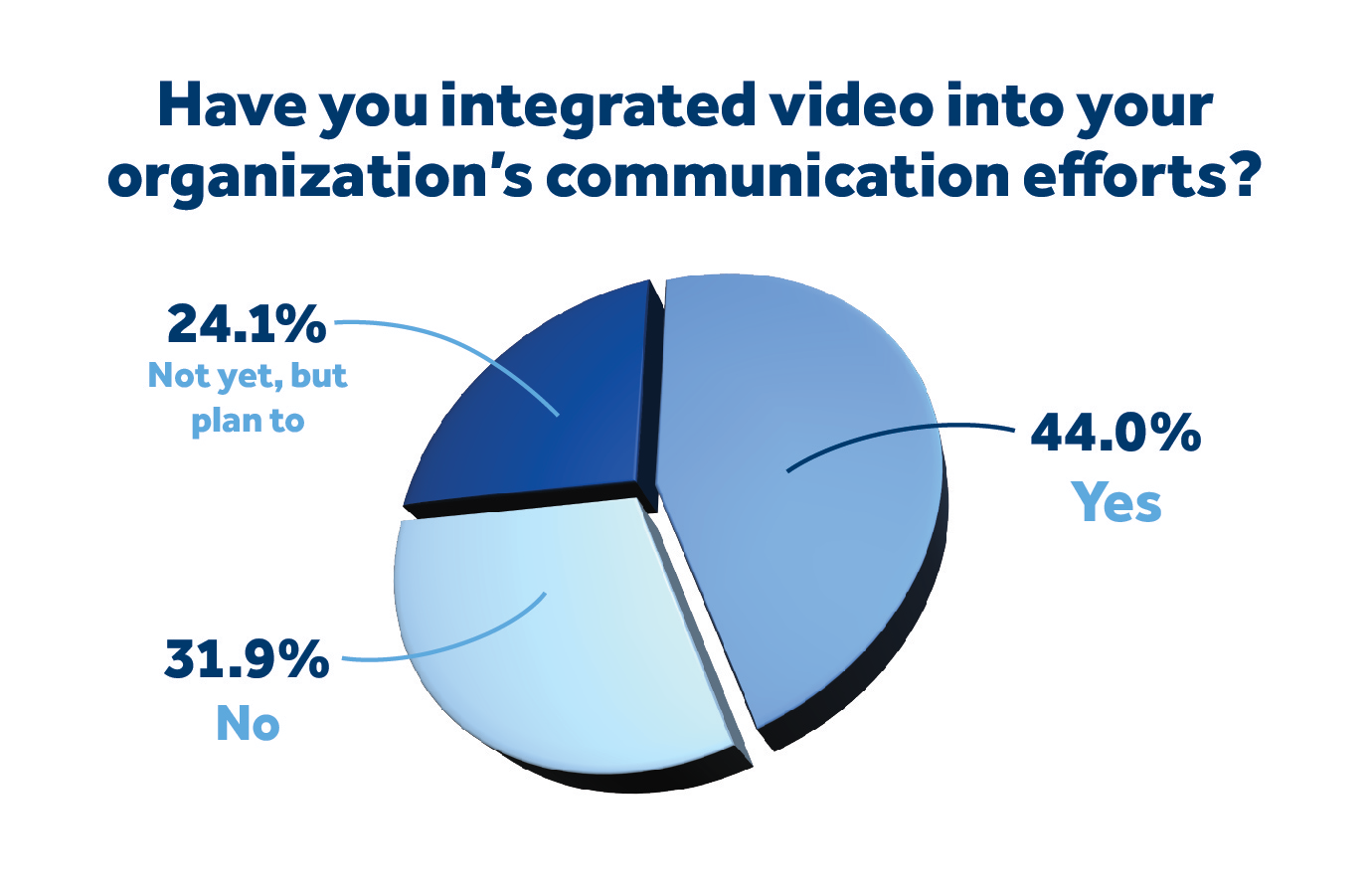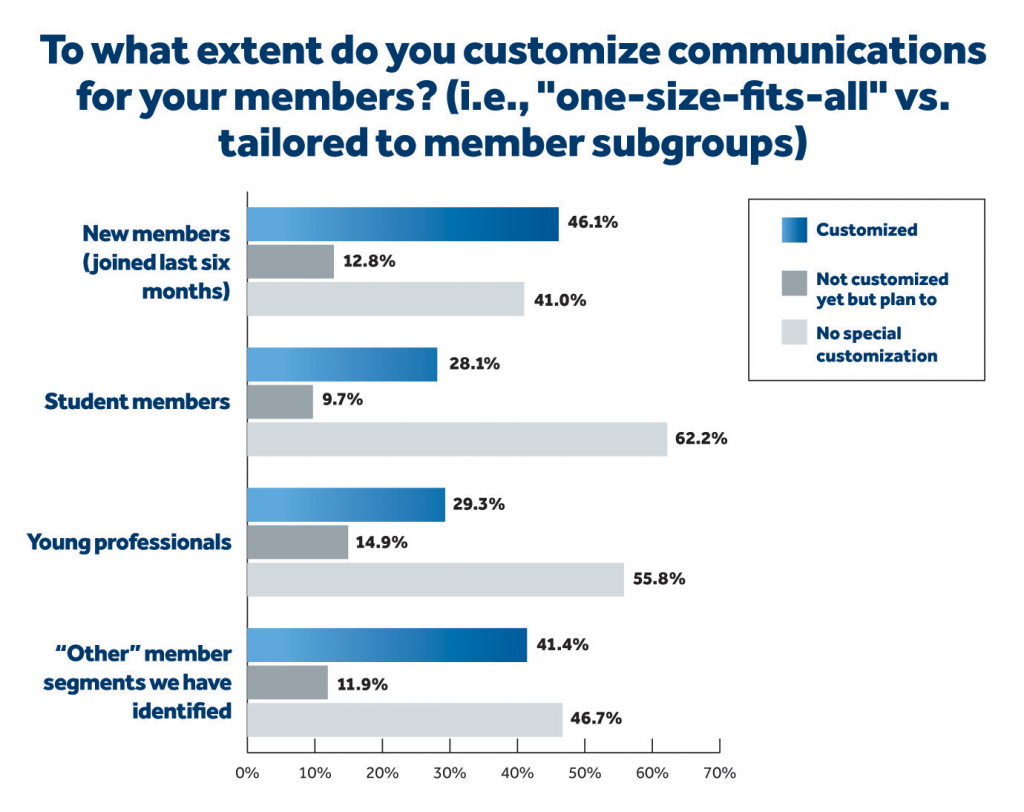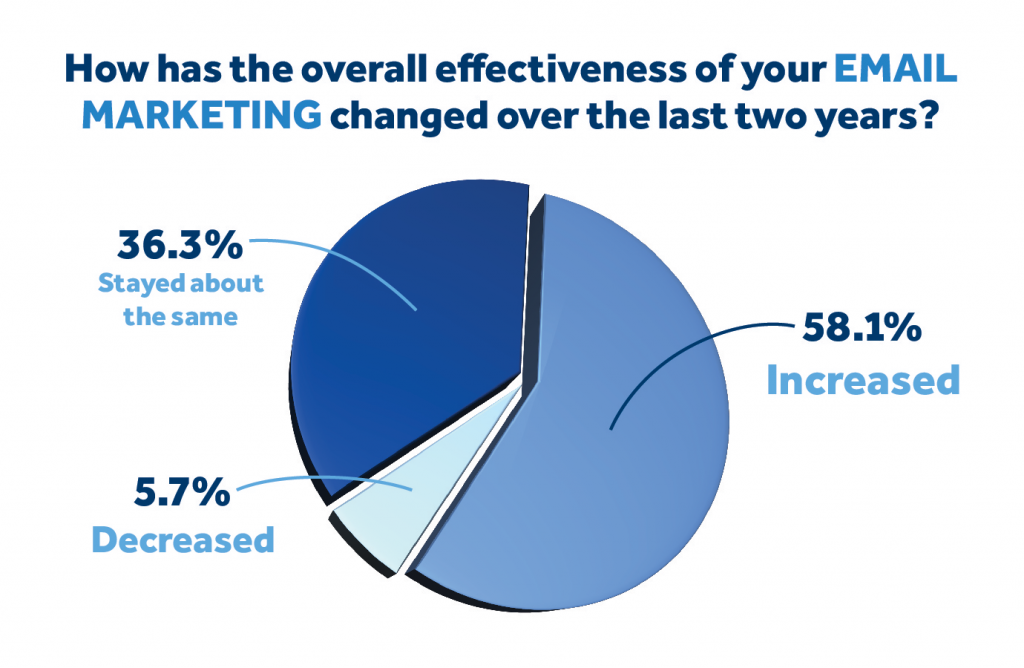5 Recommendations for a Winning Communications Strategy

With the evolving member communications landscape delivering more messages and advertisements to your members than ever before, it’s getting harder to rise above the static to get your messages heard.
That’s why Association Adviser and Naylor teamed up with members of the Association Society Alliance from 11 states to conduct our third annual benchmarking study. Aimed at providing association professionals with the best practices for member communications, the 2014 edition of our Association Communication Benchmarking Report helps to establish a point of reference for comparing your own communication strategies against an aggregate of other North American associations. It also includes recommendations and tactics that may help your association cut through the clutter so that more of your messages reach your members.
|
As has been the case each year since 2011, we found that association executives continue to believe that the majority of their communication efforts are ignored. Perhaps as a result of this, most associations seem to be very willing to try new communication tactics. For example, nearly 70 percent of the 1,031 association leaders who responded to the survey reported that they have integrated video into their communication strategies or plan to do so in the near future.

Video is great for engagement and when done well can strengthen every other form of communication and help drive membership. But even the latest, greatest communication platform is only as effective as the communication strategy that drives it. Where a lot of associations run into trouble is having the resources to actually integrate these new tools into their existing communications plan on an ongoing basis and measuring the performance of new communication tools.
Recommendation #1: Don’t Fall Victim to Shiny Object Syndrome with Your Member Communications
A new approach may be just what your association needs to help reach your communications goals, but don’t fall victim to “shiny object syndrome.” Before you make a decision to invest in new communications tools, ask your members, vendors and advertisers which of your association content channels they find most valuable and which communications platforms they are most receptive to. Your research may also help you uncover new communication platforms that members are gravitating towards or reveal to you that you already have access to tools that can amplify your communications when integrated into an ongoing plan. Marcus Underwood, Chief Innovation Officer for Naylor, says that the ROI of any new technology is important to consider prior to making a purchase but to keep in mind that the value of the investment may not always be quantifiable in financial terms. Underwood explains that certain technology investments and upgrades are just standard operating expenses for running a business and warns that there are also risks associated with not keeping up with technology.
Recommendation #2: Crowdsource and Embrace Change
When respondents to our benchmarking study were asked what it would take to get higher member engagement rates, the number one response was “the ability to really understand what kind of content recipients are expecting.” One of the best ways to discover the types of solutions members need (and that your association is uniquely positioned to provide) is to conduct short crowdsourcing sessions where you ask members to talk about the issues and hot topics that they are currently dealing with in their businesses. You can also leverage the expertise of your supplier members to discover the cutting-edge new products and information that your members need to know. Naylor’s Vice President of Content Strategy and Development, Jill Andreu, says that monetizing your content doesn’t mean you have to sacrifice quality. “Your supplier members are authorities in their field, and when you let them showcase their expertise through sponsored content they get to earn name recognition while your members learn about unique business solutions, and your association earns revenue to invest in future communications initiatives.”
Recommendation #3: Control the Controllable
Our study revealed that most associations haven’t staffed up commensurately to keep up with the increasing amount of communications they send out. For instance, an overwhelming number of associations have just one staff member responsible for all marketing, communications and publishing initiatives. So what can you do if you’re in charge of a small staff that is stretched to its limits? Control the Controllable. When it comes to taming your existing communications initiatives there are a few strategic ways to do this:
- Stop trying to conquer every available communication channel on your own if you don’t have the staff to keep up with it. By discovering which of your association’s existing communications channels your members find most valuable (as suggested in Recommendation #1) and streamlining your efforts towards tackling just those channels, you can optimize your communication strategy while cutting down on your workload.
- Delegate responsibilities to staff and volunteers that are suited to the task. It’s easier to oversee multiple communications campaigns when you’re not alone in the trenches crafting each one yourself. When assigned to staff and volunteers who are skilled at the task and enjoy doing it, your communications initiatives will likely be more successful and well received. So survey your staff and your members to find out what their interests are and in what areas they’d enjoy helping. You can also learn a lot by pursuing their social media profiles to find your hidden mavens and while you’re at it you can add them to your network of allies.
- Hire additional communications staff or outsource to communications experts who can help lighten your load. Hiring is the obvious answer when you find yourself short-staffed, but that’s not always an option for associations with tight budgets. So whether you need temporary help writing blog posts and articles or ongoing help with your newsletters, videos or magazine, outsourcing has become an easy-to-implement option and can be more affordable than hiring a new staff member.
Recommendation #4: Talk to New Members Differently
One of the most common challenges faced by associations was “Communicating member benefits effectively,” yet less than 50 percent of respondents reported that they provide customized communications to new members. Even fewer respondents reported sending customized communications to other subgroups, such as student members, young professionals and other member segments.

Greg Melia CAE, chief membership and volunteer relations officer at ASAE: The Center for Association Leadership, says that to stay relevant, it’s important to customize communications to different member segments, and that the one-size-fits-all membership model is outdated. Newer members might not be aware of all of the benefits that they are entitled to through the association and may have been attracted to one specific benefit that they only had a temporary need for. Customized communications can help ensure your members are aware of services to which they are entitled, which may compel them to stay with your association when it becomes time to renew their dues.
Recommendation #5: Overcome the Fear of “Big Data”
A positive result that emerged from our study is that nearly 60 percent of the associations surveyed said that the effectiveness of their email marketing has increased during the last three years. Rather than just relying on gut instinct or staff feedback, over half of respondents determined their effectiveness based on measurement reports that provide statistics such as opens, clicks and bounce rates. However, that means that nearly half of associations aren’t keeping track of these metrics. There seems to be a hidden fear of “Big Data” that gets associated with the measurement of online communications but the truth is that this measurement comes in the form of reports that we’re all familiar with seeing. Even those of us who are uncomfortable navigating website analytics can review an analytics report and easily determine the positive and negative trends and any metric that initially seems unfamiliar is easily defined with a quick Google search. So the bottom line is this: Don’t fear the data; the data is just there to help.
Another form of data that a majority of our survey respondents said they do regularly collect is whether sponsors and advertisers are satisfied with their investment in the association. Not surprisingly, a majority of respondents also incorporate advertiser and sponsor feedback into their pricing considerations, mix of media offerings and other sponsorship programs. This is powerful information because it can help you determine whether you’re missing out on potential advertiser revenue by pricing yourself out of the market alert or alert you to any issues that might keep a sponsor from coming back.

A Winning Member Communication Strategy Starts with Commitment to Innovation
A winning communications strategy starts with a commitment to innovation and continual improvement. Reading the latest communications news, best practices and leadership strategies will help keep your association in the know. To glean more insights from our latest benchmarking study and find out where your association stands, download it today at www.Naylor.com/Benchmarking.
Tamara Groom is a marketing specialist with Naylor Association Solutions.

